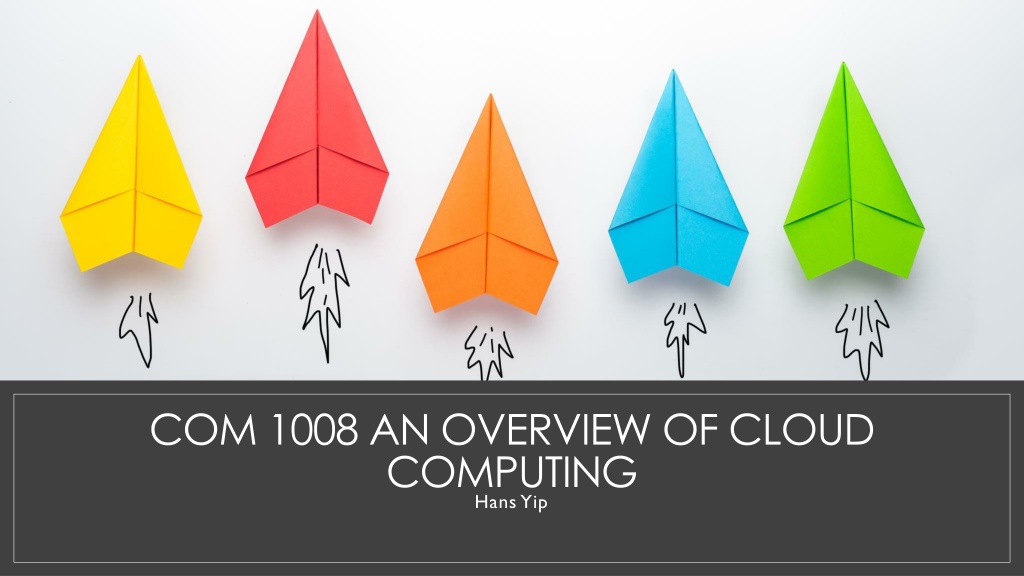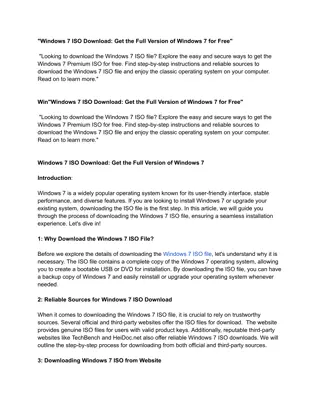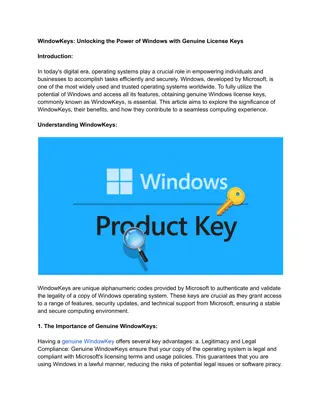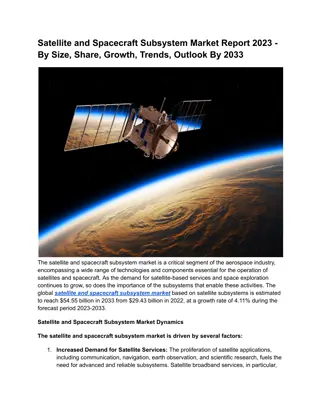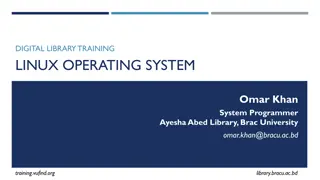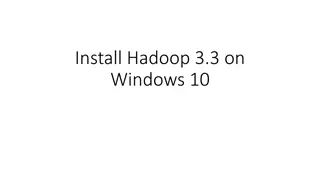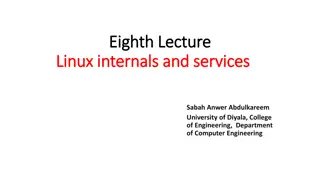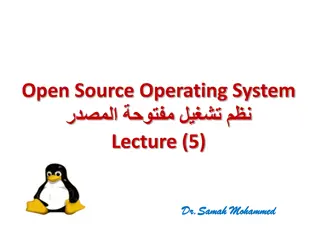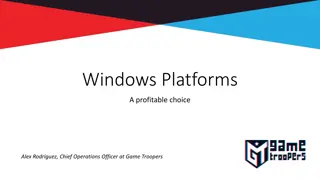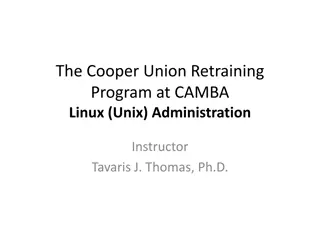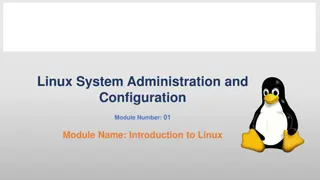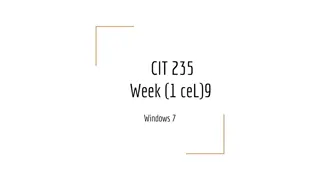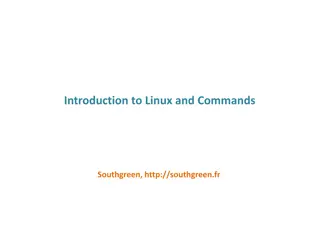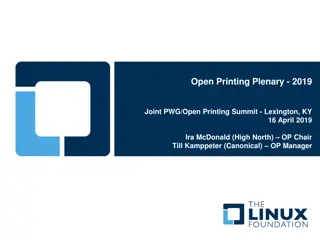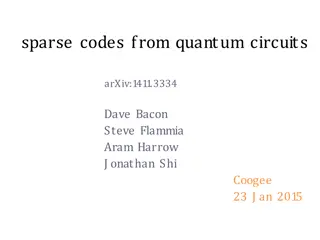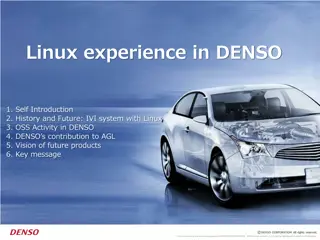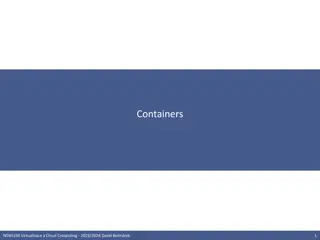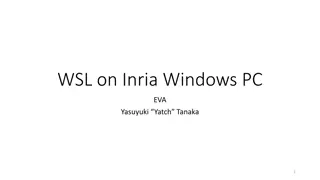Overview of Windows Subsystem for Linux 2 (WSL2)
Windows Subsystem for Linux 2 (WSL2) is a new feature in Windows 10 that enables users, especially developers, to run native Linux command-line tools directly on Windows alongside traditional desktop applications. WSL provides a way to use Bash, common Linux tools, and Linux-first tools on Windows, offering a seamless integration of Windows and Linux environments.
Download Presentation

Please find below an Image/Link to download the presentation.
The content on the website is provided AS IS for your information and personal use only. It may not be sold, licensed, or shared on other websites without obtaining consent from the author. Download presentation by click this link. If you encounter any issues during the download, it is possible that the publisher has removed the file from their server.
E N D
Presentation Transcript
COM 1008 AN OVERVIEW OF CLOUD COMPUTING Hans Yip
Learning Objectives Microsoft Windows 10 Windows Subsystem for Linux 2 (WSL) (lab)
The Windows Subsystem for Linux 2 (WSL) The Windows Subsystem for Linux (WSL) is a new Windows 10 feature that enables you to run native Linux command-line tools directly on Windows, alongside your traditional Windows desktop and modern store apps. See the about page for more details. https://docs.microsoft.com/en-us/windows/wsl/faq
Who is WSL for? This is primarily a tool for developers especially web developers and those who work on or with open source projects. This allows those who want/need to use Bash, common Linux tools (sed, awk, etc ) and many Linux-first tools (Ruby, Python, etc ) to use their toolchain on Windows.
What can I do with WSL? WSL provides an application called Bash.exe that, when started, opens a Windows console running the Bash shell. Using Bash, you can run command-line Linux tools and apps. For example, type lsb_release a and hit enter; you will see details of the Linux distro currently running. You can also access your local machine s filesystem from within the Linux Bash shell you will find your local drives mounted under the /mnt folder. For example, your c: drive is mounted under /mnt/c:
What is Bash? Bash is a popular text-based shell and command-language. It is the default shell included within Ubuntu and other Linux distros, and in macOS. Users type commands into a shell to execute scripts and/or run commands and tools to accomplish many tasks.
Why Would I use WSL rather than Linux in a VM? WSL requires fewer resources (CPU, memory, and storage) than a full virtual machine. WSL also allows you to run Linux command-line tools and apps alongside your Windows command-line, desktop and store apps, and to access your Windows files from within Linux. This enables you to use Windows apps and Linux command-line tools on the same set of files if you wish.
To Install Windows Subsystem for Linux 2 (WSL) with Ubuntu 18.04 LTS Before installing any Linux distros for WSL, you must ensure that the "Windows Subsystem for Linux" optional feature is enabled: Open PowerShell as Administrator and run: PowerShellCopy Enable-WindowsOptionalFeature -Online -FeatureName Microsoft-Windows-Subsystem-Linux Restart your computer when prompted. -------------------------------------------------------------------------------- OR Start Window, Click Settings Click apps, click Programs and Features (on the right hand side) Click Turns Windows features on or off (on the left hand side) Check Windows Subsystem for Linux. Restart the computer. To run WSL, enter wsl.exe https://docs.microsoft.com/en-us/windows/wsl/install-win10
Install Ubuntu Linux Distribution This section is for Windows build 16215 or later. Follow these steps to check your build. Open the Microsoft Store and choose Ubuntu 18.04 LTS Ubuntu 18.04 LTS From the distro s page, select Get Now that your Linux distro is installed, you must initialize your new distro instance once, before it can be used.
To Launch Ubuntu 1804 Type ubuntu1804 on the command-line prompt (cmd.exe) or click on the Ubuntu tile in the Start Menu To find out the ubuntu version from the command-line prompt, enter lsb_release a To find out kernel name: uname s To find out kernel release: uname r To find out kernel version: uname v To exit Linux, type exit
References https://www.computerhope.com/issues/ch001879.htm https://docs.microsoft.com/en-us/windows/wsl/about
